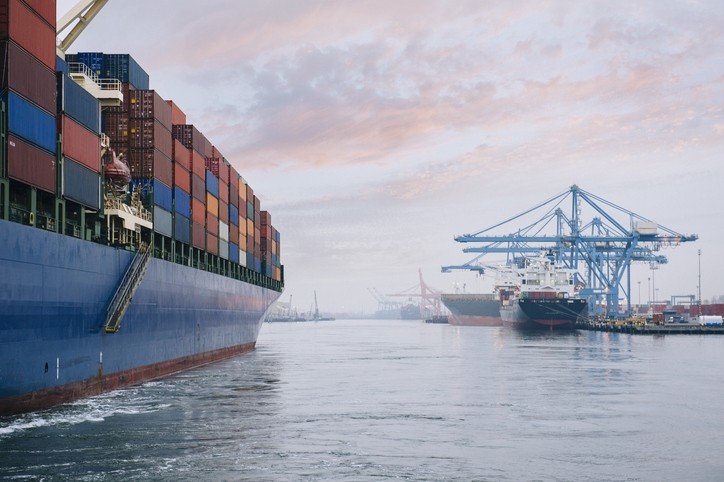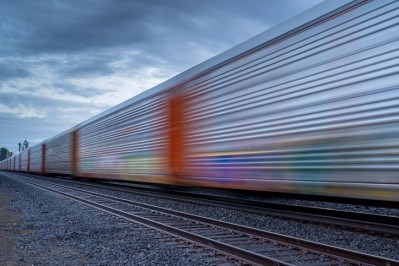‘What we’re dealing with today is a lack of infrastructure investment over decades’

The annual Purchasing and Ingredient Suppliers Conference (PISC) event brought over 300 feed ingredient buyers and sellers from across the US to San Francisco, California, for three days of educational programming, and business meetings.
“[US] freight demand remains high with low capacity,” Rodney Nye, senior vice president of business development at JB Hunt Transport, told delegates. “It’s going to take time to get more capacity to make a difference. We need to hire 110,000 drivers a year to keep up with supply and demand,” he added.
“Infrastructure is not quick, infrastructure takes time,” said Andrew Hwang, manager of maritime business development and international marketing at the Port of Oakland, who was also speaking at the conference.
Besides solutions to help reduce shipping challenges, the conference also shed some light on research into preventing outbreaks of African swine fever (ASF) and other transboundary animal diseases in the US, the impact of California’s Proposition 12, the economic developments affecting the grain and animal markets, and, of course, the likely consequences of the Black Sea conflict.
We ran a Q&A with AFIA’s president and CEO, Constance Cullman, to get a sense of what the US industry is doing to offset some of these risks.
FeedNavigator: What are shippers and freighters doing to decrease US supply chain pressures?
Constance Cullman: What our industry is experiencing now with global disruptions in supply chains in the wake of COVID-19 is a direct result of a lack of federal investment in America’s infrastructure over decades.
As we heard from our PISC speakers, many US ports are under a continual strain to build velocity, meaning they need to service larger ships with more cargo than ever before using modern equipment, without land expansion. At the same time, trucks are in high demand to move freight cross-country, despite rising fuel and shipping costs and delays, yet lack a stable, eligible workforce to drive them and will soon be subject to regulations on the types of trucks and fuel that can be used.
Some solutions PISC speakers presented included: performing land planning studies at the ports, to evaluate how transportation for both ships and trucks could further reduce traffic jams and keep goods moving; evaluating shipping container needs for the future; offering sign-on bonuses and other financial incentives to attract and retain drivers; and modifying driving routes to be locally based.
We also expect to start seeing the Biden administration’s financial infusion into US infrastructure projects to bear fruit in the future, improving America’s roads, bridges, ports and waterways – critical to animal food industry importers and exporters.
FEN: What’s new in research on ASF and other transboundary animal diseases?
CC: Despite the fact that African swine fever (ASF) is now in the western hemisphere for the first time since the late 1970s, as we heard from Kansas State University’s Dr Cassie Jones, at PISC, there is reason for optimism: the scientific community has made significant progress in the past couple of years on developing a promising vaccine that could be scaled up and distributed quickly, if needed.
We also heard about KSU’s effort to develop a ‘national playbook’ for US pork producers and feed manufacturers to support swine health, commerce and trade before an outbreak. It provides information to help feed manufacturers improve their biosecurity plans now by reducing onsite risks associated with disease transmission via feed. Our industry is also collaborating on research projects aimed at investigating how to decontaminate infected facilities to curtail the virus’s spread, should it reach our shores.
While ASF is just one example of how the industry is working to keep foreign animal diseases out, our industry can take lessons learned from other transboundary animal diseases to improve biosecurity preparedness plans and develop country-specific response plans to limit disease spread and economic or trade repercussions.
FEN: How is California’s Proposition 12 affecting animal agriculture and interstate commerce?
CC: As we heard from our speakers at PISC, California’s Proposition 12 is yet another example of an animal rights group using a state ballot initiative to drive vast agricultural production changes across the country. Changes that impact interstate commerce with little benefit to animal welfare, yet at a huge cost to farmers and consumers of pork products. The speakers shared this example as a warning to animal food manufacturers on the need to be engaged with local and state policymakers so that they understand the science that goes behind protein and dairy production, especially given the fact that those who vote in favor of these initiatives are often removed from agriculture, uninformed and influenced by emotional, but rarely factual, advertising campaigns.
FEN: What economic challenges are the US grain and animal markets facing?
CC: The US grain and animal feed markets were already facing many challenges over the past two years including extreme weather events that resulted in lower crop production numbers, rising inflation and fuel costs, COVID-19-induced production challenges and uncertainty in the supply chain. As we heard from our PISC speakers, the recent war in the Ukraine has further exacerbated these challenges.
Major disruptions to the global supplies of grains, fuel, fertilizers and more have made the situation even more volatile than before for those responsible for producing the world’s food supply. We can expect that, in the interim, the cost of production, including for feed, is going to be higher than normal, which will ultimately impact prices at the grocery store, but the demand for animal protein is not expected to experience a significant decline.








